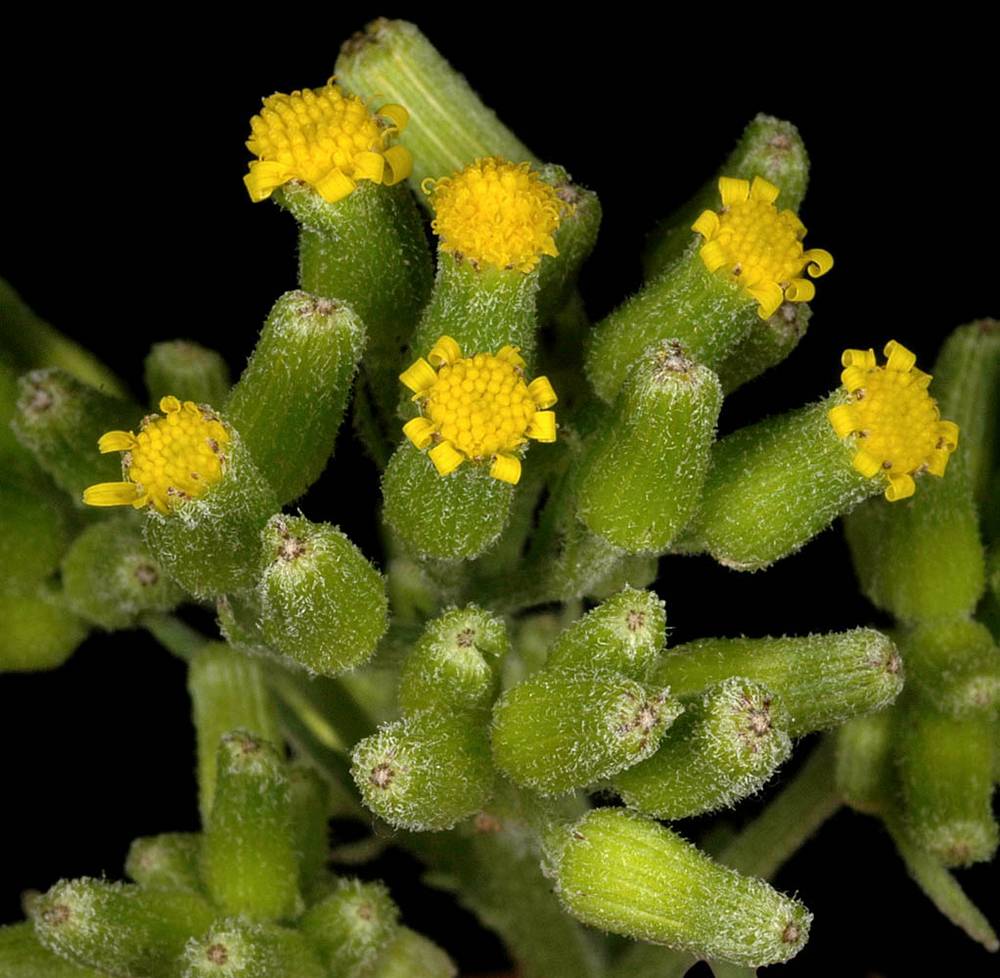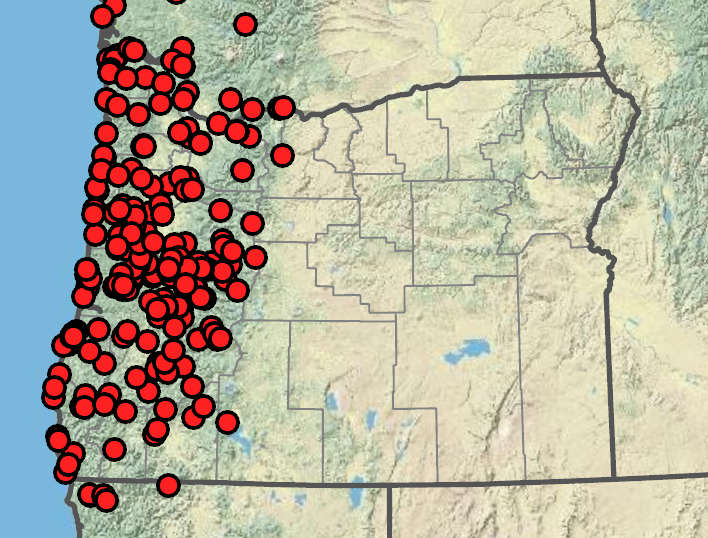Senecio sylvaticus
Senecio clarkianus
wood groundsel, woodland ragwort
1, densely pubescent with abundant curly hairs.
evenly distributed along stems, obovate to oblong in outline, bases tapering, usually 1–2-pinnately lobed or divided, ultimate margins dentate;
proximal petiolate;
distal clasping and bract-like.
corymb-like arrays;
bracts 0 or inconspicuous.
cylindric.
0, rarely 1–8;
rays 1–2+ mm.
40–50.
13+, rarely 21, 4–7+ mm;
tips green or minutely black.
0 or 1–5+ linear to filiform bractlets, 2–3 mm.
1.5–2.5 mm, sparsely pubescent on ribs.
12–24.
=40.
Senecio sylvaticus
Senecio clarkianus
Disturbed open wooded areas. Flowering May–Oct. 0–1200 m. Casc, CR, ECas, Est, Sisk, WV. CA, WA; north to British Columbia, scattered in eastern North America; Asia, Europe. Exotic.
Senecio sylvaticus is a native of Eurasia and favors cool, damp climates. In overall appearance, it resembles the more common S. vulgaris. However, the latter has distinctive black-tipped phyllaries, while S. sylvaticus has phyllaries that are generally green-tipped. This species is well established in the Pacific Northwest and in parts of eastern Canada. Elsewhere it is sporadic.
Debra Trock
- Local floras:
BC,
CA,
OR,
WA
- Local Web sites:
CalFlora,
CalPhotos,
Flora NW,
PNW Herbaria
WildflowerSearch
iNaturalist (observations)
USDA Plants Database
- LBJ Wildflower Center
- SEINet
- Plants of the World Online
- Encyclopedia of Life
- Wikipedia
- Google Image Search



